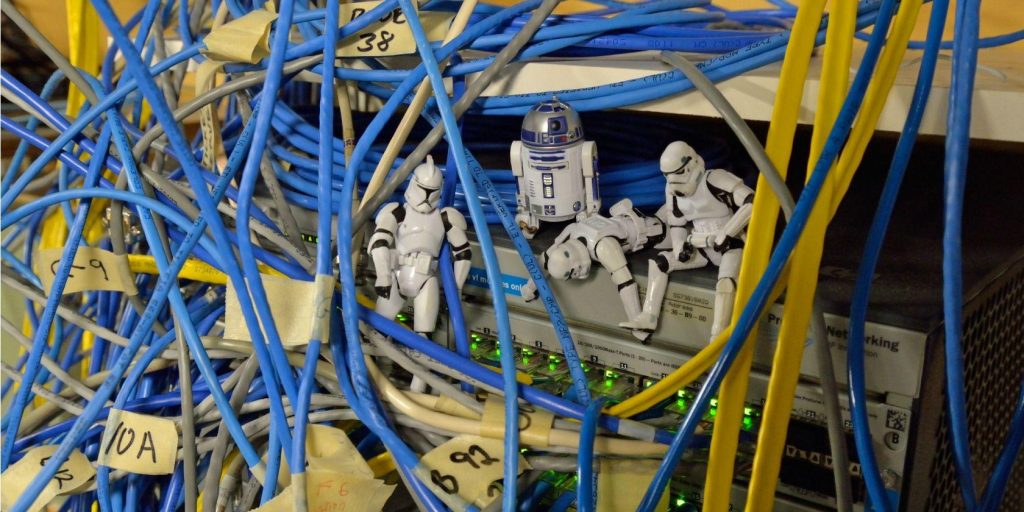It sounds like fun, but the harsh reality is that improper wiring can lead to heat retention, inopportune hardware failure, and maintenance headaches, and just spending a little time in proper planning and organization is one less thing than that. That you will have to worry about in the future. In this post, we’ll explore how you can keep your network cabling organized and give it the care and attention it deserves to ensure network reliability and cable longevity.

Here are our eight helpful cable management tips for network engineers and cable installers:
Don’t skimp on labels
How many times have you thought, “Oh, I wish I had labeled this”? Labeling seems like a cumbersome task when you’re actually doing it, but it’s really worth it in the long run. The key to proper labeling is making sure to label both ends of networking cables, power cables, patch cables, or any other type of cable involved in the installation. Also, make sure your labeling is consistent so that you or any other installer can easily figure out what goes back to where. You will appreciate it later.
Read Also: Network cabling installation
Measure everything
I heard the old saying: “Measure twice, cut once.” In network cabling, this is an old but important saying to remember. Reduce costly cable waste by carefully measuring your cables. This will lead to fewer tangles and lower costs. Every foot of wasted cable adds up. So be sure to measure twice and cut once.
Cable length matters
Which is better: choosing exact cable lengths or leaving room for slack? Network engineers have conflicting views on this. What we have seen is that in almost all cases, messy wiring is due to the wrong length of cable. Using shorter cables whenever possible is the best practice, however, using custom cables is actually the best solution for you to get the exact length of cable you need without excess.
Avoid sharp turns
The cables can appear quite robust and flexible, but they require proper care and handling. Do not compromise the integrity of the cables by twisting them around tight bends. Constant bending can damage network cables and lead to loss of speed, uneven network cable problems, and poor data transmission.
Take your time to finish
We cannot emphasize enough on this point. Practice proper completion at any cost. Take the extra time, and if you find that a connection is lost while moving cables, do it again. You may want to speed up this process to save time, but when all is said and done, you’ll end up with a colossal problem if you have to troubleshoot and fix all those terminations.
Don’t buy cheap because they are cheap
When it comes to cables, there’s a reason cheap is cheap. In most cases, patch cords and inexpensive patch cords have a sub-standard sheath and narrow diameter copper cores that can cause signal loss. A smaller copper core can also be more brittle and weak and is more likely to bend, break, or stretch, increasing the cable’s failure rate. When shopping for cables, it is good practice to shop by brand to find the cable you prefer.
Insulate cable by type
Separate the different types of the cable into different lengths. Cable organizers and hangers can come in handy here. This allows easy access and minimizes interference between different types of cables. Especially if you are bundling power cables, for example, they can cause electromagnetic interference with the surrounding network cables, so separate them.
Velcro saves the day
Velcro cable ties have many advantages over standard plastic cable ties any day. They are easy to add, remove, and completely reusable. What makes them especially effective is that when a large cable bundle is mounted to an anchor point within a rack, a good strong velcro wrap or tie can hold the weight and make it easier to regroup later. The velcro is also easily cut to whatever length you need. Don’t take the risk of dealing with a spaghetti net bomb – trying to spread it and not succeeding is not an option with your data center at stake. With a little care and organization up front, you’ll have a clean, safe, and hassle-free setup to be proud of.





